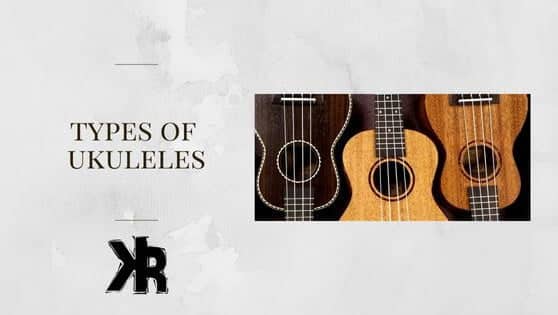Table of Contents
The ukulele has seen a rise in popularity recently, with its pleasant sound and small size. The most common types are the Soprano, Concert, Tenor, and Baritone ukuleles, each with its own sound and size.
However, there are other types of ukuleles that may be less known to new players. The best ukulele for you depends on your preference. You might prefer the small size of the Soprano or the fuller sound of the Tenor.
If you’re interested in learning more about ukuleles, this Killer Rig article will explore the different types available. This will help you understand the qualities of each and assist you in choosing the right ukulele for you.
Types of Ukuleles
Thanks to an explosion of manufacturers fuelled by the instrument’s booming popularity, the range of choices has ballooned like never before.
Standard Ukuleles
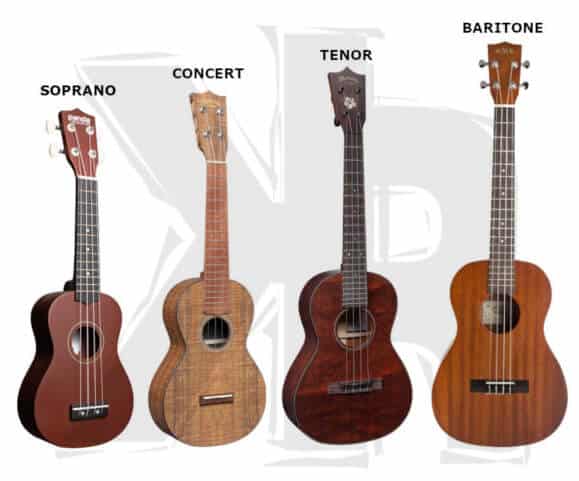
Soprano
The Soprano ukulele is known for its small size, typically about 21 inches, which makes it highly portable. It is usually tuned to the key of C and is often favored for its affordability.
However, its small size can be challenging for people with larger hands. In such cases, the Concert Ukulele, which is slightly larger, might be a better option.
The Soprano is often what people picture when they think of a ukulele, representing the classic sound and style.
Concert
The Concert ukulele, larger than the Soprano, usually stretches to about 23 inches. Also tuned to C, it offers a richer, fuller sound, making it great for intricate melodies and chords.
If volume is a concern, the Concert model cranks it up a notch compared to the Soprano. Its larger size also makes it more accommodating for individuals with larger hands, making it a great starting point for newbies.
Do you need a pick to play ukulele? Find out here!
Tenor
Moving up the size ladder, we find the Tenor ukulele. Sharing tuning with the Concert but boasting a 26-inch length, the Tenor’s size could be a blessing for some and a hurdle for others.
If you’re gifted with small hands or shorter fingers, one of the smaller options might suit you better. Volume won’t be a concern with this size, which is often a hit with beginners.
Baritone
The baritone ukulele is the largest. It’s tuned to the key of D and has a length of about 30 inches. The large size and lower tuning of this type give it a very warm and loud tone, which puts it in a category of its own.
It’s a very fun instrument to play, but does present a tougher learning curve due to the size and tuning. This type is not suggested for beginners as a result. We suggest the tenor or concert ukuleles instead when getting started.
Which are the best Ukulele brands? Click here to find out!
Bass Ukulele
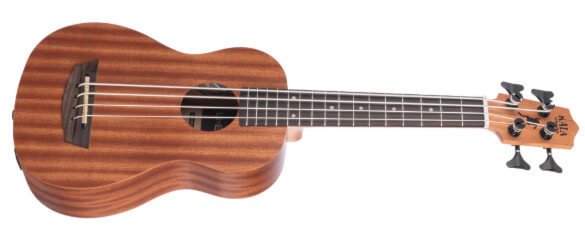
Introducing the mighty bass ukulele! The heavyweight of its kind, boasting the lowest notes in the ukulele family. Picture the resonant chords of a standard bass guitar, mirroring its E-A-D-G tuning.
This ukulele stands out with its rich and vibrant sound, making it ideal for playing deep melodies.
In 2009, Kala, a well-known ukulele manufacturer, introduced this innovative design to the market. It resembles a bass guitar but is the size of a baritone ukulele.
The strings are thick and somewhat loose due to the shorter scale, which might feel unusual to your fingers.
The Kala U-Bass is the most popular model. It’s available in different wood types like mahogany, maple, and spruce, and comes in various colors, ranging from dark to light shades. With the variety available, you can find a U-Bass that suits your style.
Read our article, Is ukulele easier than guitar?
Guitalele
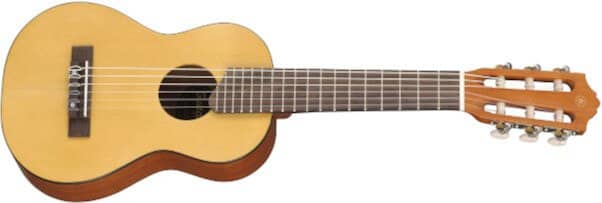
Guitalele or ukulele guitar is similar to a classical acoustic. But it’s slightly smaller and has a higher pitch. It can be tuned like a guitar with six strings.
But has an arrangement of A-D-G-C-E-A. This is the equivalent timbre of having a guitar with a capo on the fifth fret. The pitch, thus, is higher.
This makes the guitalele very versatile, as it can be used for both guitar and ukulele songs. The guitalele is a great choice for travel, as it’s small and lightweight but still has a full, rich sound.
It’s also a great choice for children, as the smaller size and higher pitch make it easier to play.
The strings are made of nylon. This is much softer sounding and resembles a classical acoustic guitar. So if you can play the guitar, then this is a great hybrid to pick up if you are interested in the ukulele.
Take a look at all the different ukulele sizes here!
Solid Body Electric Ukulele
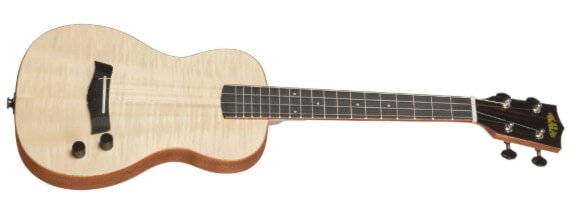
The electric ukulele is a fairly new invention, first appearing on the market in the early 2000s. These ukes are designed to be played through an amplifier.
This gives them a much louder sound than acoustic ukuleles. Electric ukuleles are available in both soprano and concert sizes.
They have a solid wood body, which means they don’t make much sound unless plugged into an amplifier. They also come with either nylon or steel strings, so this will also determine their volume and sound.
If you want to rock out, the solid-body electric ukulele is a fantastic option. Opt for an acoustic ukulele instead if you want an instrument that can be played without amplification.
Acoustic-Electric Ukulele
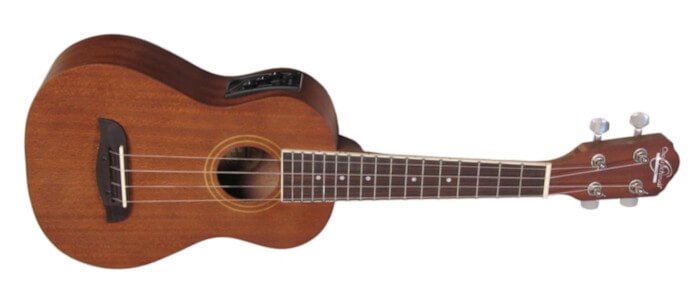
This ukulele, it’s got an extra feature called an “electronic pickup”. Fancy name, but what it really means is, it can take the gentle, happy ukulele tunes and amplify them, making them resonate far and wide.
You can hook it up to a loudspeaker for everyone around to enjoy. Even better, it can feed the music right into your computer for recording!
It preserves the real, natural tone. So when you plug it in, it doesn’t lose its identity. It still sings in the ukulele’s voice that we’ve all grown fond of. It’s the best of both worlds, really.
Banjolele
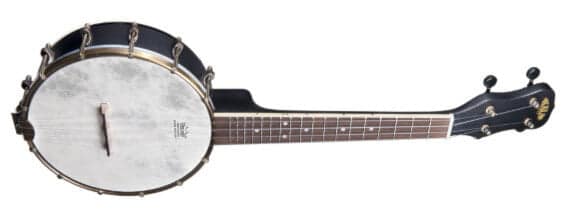
The banjolele, also known as the uke-banjo. It’s a four-stringed musical instrument with a banjo-like body and a ukulele-like neck.
It was created in the early 1900s and was used by British comedian and musician George Formby. He used it as his signature instrument.
The banjolele is most commonly tuned in G-C-E-A, like a ukulele. But it can also be tuned in other ways, such as D-G-B-E like a guitar, or A-D-F-#B like a mandolin. The instrument typically has an 8-10″ diameter head and 16-18″ scale length with 16 frets.
The banjolele is a brighter-sounding instrument than the ukulele. Primarily due to its metal strings. It has a more jangly, banjo-like sound. It’s a popular choice for ukulele players who want to add a different sound to their repertoire.
Resonator Ukulele
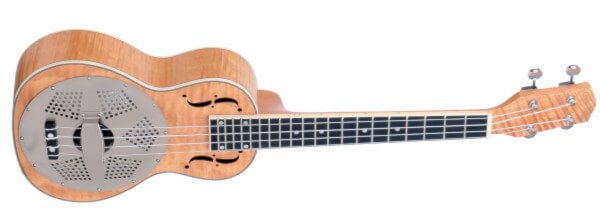
A resonator ukulele is exactly what you think it is. A ukulele that has a resonator attached to the body. This gives the ukulele a louder, fuller sound as the resonator almost acts like a speaker.
These are usually played unplugged. But they can be used with an amplifier for a bigger sound if equipped with electronics. But this is rare and pretty much custom.
Resonator ukuleles are great for players who want something with a bigger sound. They are essentially scaled-down guitars with 4 strings. They are also well suited for genres of music that need a louder ukulele, such as country or bluegrass.
Do you plan on playing unplugged most of the time and need more volume? Then a resonator ukulele is a great option.
Archtop Ukulele
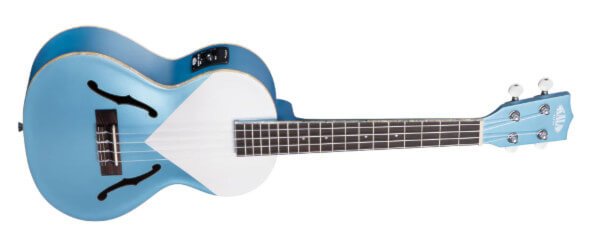
There are many different types of ukuleles, including the archtop uke. As its name suggests, the archtop ukulele has an arched top.
This gives it a special appearance. The arched top also helps to improve the ukulele’s sound quality. This is by providing greater resonance.
This is especially popular with jazz music as the tone is more mellow but very rich sounding. The arch top is inspired by the guitar and doesn’t really transfer over to the ukulele well. But it does make a small impact.
Archtop ukuleles are generally more expensive than other types. Yet, they are worth the investment if you are serious about playing this instrument. Especially if you include electronics in the build and design.
Harp Ukulele
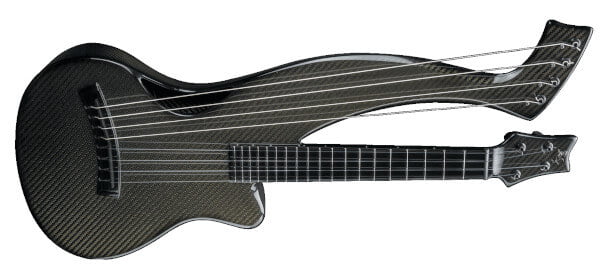
The Harp ukulele is a type that has an interesting design. It’s somewhat triangular and has strings that run along an arm as well as a neck.
This gives the harp ukulele a new sound that is different from other ukes. The harp ukulele is also small, which makes it very portable.
This design is hard to miss! But is also not very common. You might see the harp ukulele in an ensemble or even as a solo instrument. Looking for something different in sound and design? The harp ukulele is definitely worth trying.
8-String Ukulele
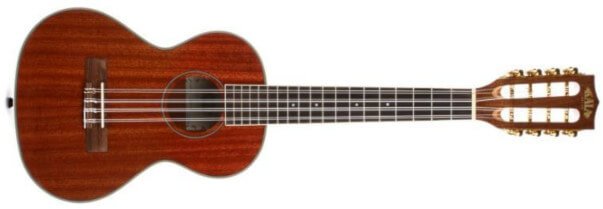
Another interesting and unique ukulele is the 8-string version. It’s like a 12-string acoustic guitar, where the extra strings enhance the tone. Each string set is tuned to be an octave apart, except for the E and A.
But there are many ways to tune this ukulele. Experimentation could uncover some great sounds. This is primarily used for strumming, as picking single notes is a bit challenging.
An excellent alternative for those who wish to give their sound additional depth is an 8-string ukulele. Check it out if you’re seeking a ukulele with a different sound that is up for the task.
Other Ukulele Types
There are a few other ukulele types that we didn’t mention above. They are worth considering should you be interested in finding something unique. They include:
- Lap Steel Ukulele.
- Travel.
- 5-String.
- 6-String.
- Tahitian Ukulele.
- Long Neck Ukulele.
Many builders are coming out with new designs due to their increasing popularity. I’m sure you will find some that even we were not aware of.
Conclusion
Choosing your first ukulele can be an enjoyable process. Take the time to hold and strum different types to see what feels right for you.
You might prefer the tenor ukulele, which offers more space for your fingers, making it easier to play complex chords. Alternatively, you could be attracted to the classic, sweet sound of the soprano ukulele.

